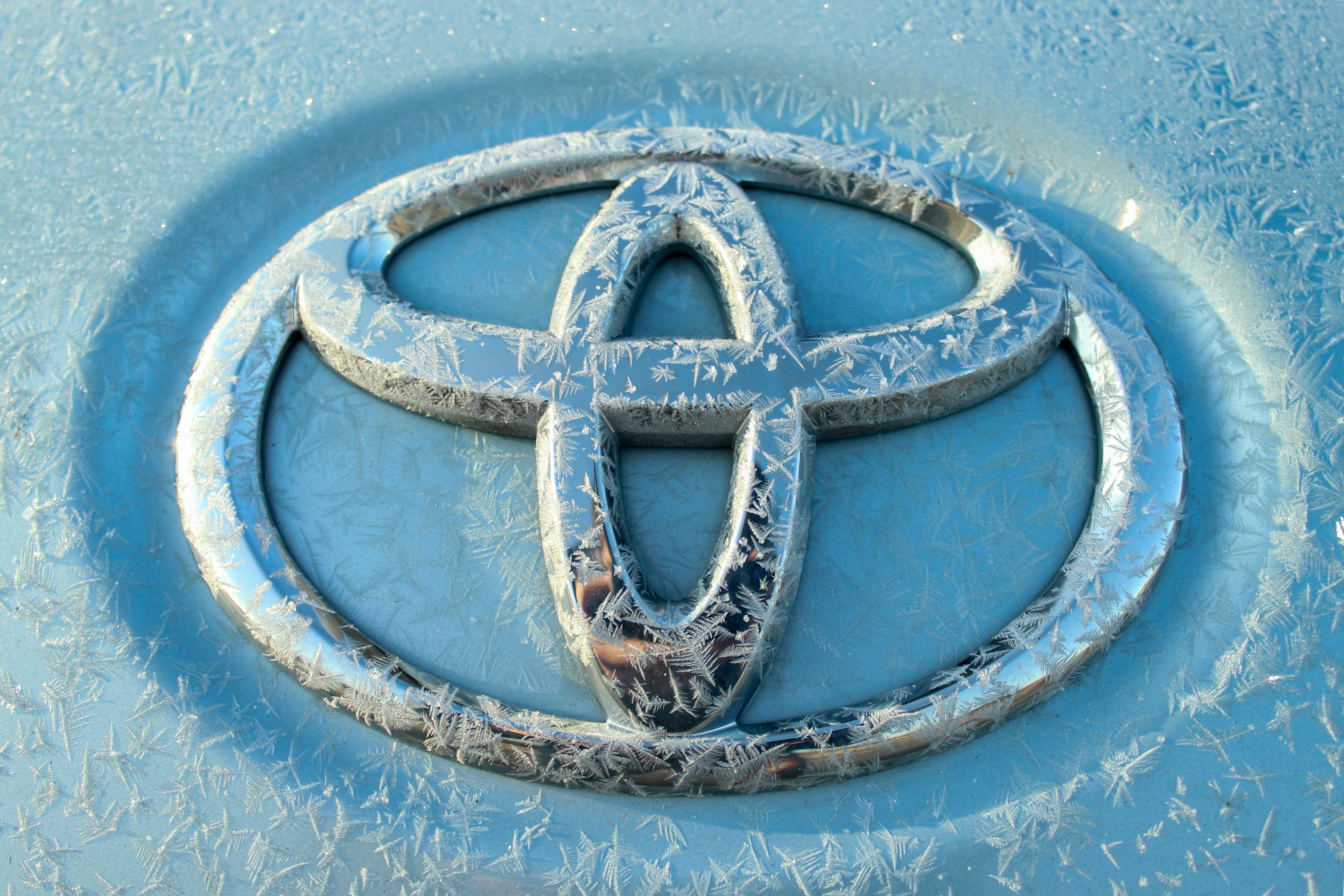Setting the Stage: Toyota's Vision for the Future
In the the automotive industry, Toyota shines as a pillar of innovation and foresight. The company is steadfast in its commitment to pioneering advancements that push the boundaries of technology and sustainability. As we stand at the threshold of a new era, it is vital to explore Toyota's visionary roadmap that aims to revolutionize the future of mobility.
A Glimpse into Toyota's Recent Battery Technology Workshop
Recently, Toyota revealed a series of innovative developments in battery technology during a technical workshop. This event was a testament to Toyota's continuous pursuit of excellence, offering a sneak peek into the bright future of battery electric vehicles (BEVs). The knowledge disseminated during this workshop has sparked conversations and speculations among industry aficionados and experts alike.
The Role of Takero Kato in Shaping Toyota's BEV Factory
Leading these groundbreaking initiatives is Takero Kato, the president of Toyota's BEV Factory. Kato's visionary leadership and strategic foresight have been pivotal in guiding the company towards a future where BEVs are not merely a viable alternative but a preferred choice for consumers. His focus on crafting battery solutions that cater to a wide array of customer needs highlights Toyota's customer-centric approach to innovation.

The Evolution of Liquid Electrolyte Batteries
Overview of Current Mainstream Technologies
As we delve deeper into the sphere of battery technology, it is apparent that liquid electrolyte batteries have been the cornerstone of the BEV industry. These batteries have experienced numerous transformations, each version aiming to improve energy density, affordability, and charging speeds. The evolution of these batteries showcases Toyota's dedication to expanding the horizons of what is possible.
The Three Pillars of Toyota's Liquid Electrolyte Battery Development
- Performance Lithium-Ion Battery: A Leap Towards 800km Range
The unveiling of the Performance Lithium-Ion battery marks a significant milestone in Toyota's journey. Slated for a 2026 release, this battery is set to redefine cruising range standards, boasting an impressive 800km on a single charge. This innovation is perceived as a game-changer, promising swift recharging times and a notable reduction in costs.
- Popularisation Lithium Iron Phosphate Battery: Bridging Quality and Affordability
In an effort to make BEVs accessible to a wider audience, Toyota is also concentrating on the creation of high-quality, yet affordable battery options. The Popularisation Lithium Iron Phosphate battery embodies this vision, promising a substantial increase in cruising range without a hefty price tag. This initiative mirrors Toyota's commitment to nurturing a more inclusive BEV market.
- High-Performance Lithium-Ion Battery: Pushing the Boundaries of Range and Efficiency
Toyota's dedication to innovation is unyielding. The company is also working on a high-performance lithium-ion battery that aims to further boost cruising range and efficiency. This battery, which integrates a high nickel cathode with a bipolar structure, is anticipated to establish new industry benchmarks, offering over 1000km of range and rapid charging times.
The Advent of Solid-State Batteries
Understanding the Potential of Solid-State Batteries
As the industry progresses, attention is gradually shifting towards the development of solid-state batteries. These batteries, renowned for their quicker ion movement and higher voltage tolerance, are emerging as potential game-changers in the BEV industry. Toyota has been a pioneer in this transition, making significant progress in addressing the challenges associated with these batteries' durability.

Toyota's Breakthrough in Solid-State Battery Technology
- Overcoming the Durability Challenge
Toyota's recent progress in solid-state battery technology has successfully tackled the anticipated shorter battery lifespan issue. This advancement has redirected the company's focus towards mass production, with plans to introduce these batteries to the market by 2027-28. This development marks a critical juncture in the evolution of BEVs, promising faster charging times and higher power output in a compact package.
- A Shift in Focus: From HEVs to Next-Generation BEVs
Initially, the deployment of solid-state batteries was expected in hybrid electric vehicles (HEVs). However, Toyota has shifted its focus towards next-generation BEVs, recognizing the immense potential these batteries possess in enhancing electric vehicles' performance and efficiency. This change in direction emphasizes Toyota's commitment to spearheading the BEV revolution.
- Future Developments: Aiming for a 50% Improvement in Cruising Range
Looking forward, Toyota is already embarking on further advancements in solid-state battery technology. The company aspires to achieve a remarkable 50% improvement in cruising range compared to the performance lithium-ion battery. This ambitious objective mirrors Toyota's relentless drive for innovation, promising to reshape the standards of performance and efficiency in the BEV industry.
Optimising Battery Height for Enhanced Range
The Importance of Aerodynamics in Vehicle Range
In the mission to maximize BEVs' range, aerodynamics play a vital role. Toyota's strategy to enhance vehicle range extends beyond merely lowering the drag coefficient (Cd). The focus is on optimizing the Cd multiplied by the frontal area (CdA), a factor that significantly influences a vehicle's range capability.
Toyota's Innovative Approach to Battery Height Reduction
- The Impact of Battery Height on Vehicle Design and Performance
Toyota's innovative stance on battery design centers on minimizing the battery's height, typically situated under the vehicle's floor. This decrease in height not only augments the vehicle's aerodynamics but also elevates driving engagement and packaging. This effort is perceived as a major step towards augmenting the overall range of BEVs.
- Future Prospects: Aiming for Flatter Battery Technology
As Toyota continues to innovate, the company is striving to develop even flatter battery technology. This endeavor aims to further enhance the range and performance of BEVs, promising a more streamlined and efficient vehicle design. This progressive approach is expected to positively influence the BEV industry, establishing new standards for performance and efficiency.
Toyota's Commitment to Sustainable Mobility
Toyota Motor Europe: A Brief Overview
Toyota Motor Europe stands as a testament to Toyota's dedication to promoting sustainable mobility across the continent. With a substantial presence in various European countries, the company has played a crucial role in advocating for eco-friendly transportation solutions. This section provides a brief overview of Toyota's initiatives and accomplishments in Europe, underscoring the company's commitment to fostering a greener future.
Toyota's Vision for a Carbon-Neutral Future
- Aiming for 100% CO2 Reduction in Western Europe by 2035
In line with its commitment to a sustainable future, Toyota is tirelessly working towards achieving a 100% reduction in CO2 emissions in Western Europe by 2035. This bold goal showcases the company's dedication to battling climate change and encouraging environmental conservation. This effort is perceived as a significant stride towards realizing a carbon-neutral future.
- KINTO Mobility Brand: A Step Towards Inclusive and Sustainable Mobility
In alignment with its vision for a greener future, Toyota launched the KINTO mobility brand in Europe. This initiative aims to offer a variety of mobility services that encourage inclusivity and sustainability. Through KINTO, Toyota intends to foster a more connected and inclusive mobility ecosystem, nurturing a culture of eco-friendly transportation solutions.
Conclusion
Recapitulating Toyota's Advanced Battery Technology Roadmap
As we conclude this exploration of Toyota's advanced battery technology roadmap, it is evident that the company stands as a beacon of innovation and sustainability in the automotive sector. Toyota is continuously seeking ways to improve its battery technology and reduce its environmental impact.
FAQs
Q1: What are the key features of Toyota's next-generation BEVs?
A1: Toyota's next-generation Battery Electric Vehicles (BEVs) are expected to showcase several key features that set them apart in the automotive industry. These include:
- Extended Cruising Range: With the development of high-performance lithium-ion batteries, Toyota aims to offer a cruising range of over 1000km, significantly reducing the need for frequent charging.
- Rapid Charging Times: Leveraging advancements in battery technology, the next-generation BEVs are designed to support rapid charging, minimizing downtime and enhancing the user experience.
- Innovative Battery Technology: Toyota is at the forefront of developing solid-state batteries, which promise faster ion movement, higher voltage tolerance, and improved durability compared to traditional liquid electrolyte batteries.
- Enhanced Aerodynamics: Toyota is focusing on optimizing vehicle design to improve aerodynamics, including efforts to reduce battery height, which can influence the vehicle's drag coefficient and, consequently, its range.
- Affordability and Accessibility: Through the development of the Popularisation Lithium Iron Phosphate battery, Toyota aims to make BEVs more affordable and accessible to a broader audience, bridging the gap between quality and affordability.
Q2: How is Toyota planning to enhance the energy density and charging speeds of liquid electrolyte batteries?
A2: Toyota is adopting a multi-faceted approach to enhance the energy density and charging speeds of liquid electrolyte batteries:
- Development of High-Performance Batteries: Toyota is working on high-performance lithium-ion batteries that combine a high nickel cathode with a bipolar structure, aiming to set new benchmarks in the industry with over 1000km of range and rapid charging times.
- Research and Innovation: Continuous research and innovation are being undertaken to improve the energy density of batteries, which would allow for extended cruising ranges without significantly increasing the battery size or weight.
- Collaboration with Industry Experts: Toyota is collaborating with industry experts and researchers to develop technologies that can facilitate faster charging speeds without compromising the battery's lifespan or safety.
Q3: What are the expected benefits of Toyota's solid-state battery technology?
A3: The anticipated benefits of Toyota's solid-state battery technology are manifold:
- Faster Charging Times: Solid-state batteries are expected to offer faster charging times compared to liquid electrolyte batteries, enhancing the convenience for users.
- Higher Energy Density: These batteries are known for their higher energy density, which can potentially offer extended cruising ranges, making long-distance travel more feasible.
- Improved Safety: Solid-state batteries eliminate the use of liquid electrolytes, which can reduce the risk of leaks and associated safety hazards.
- Longer Lifespan: Toyota's advancements in this technology have addressed durability challenges, promising a longer lifespan compared to conventional batteries, which can contribute to a lower total cost of ownership.
Q4: How does battery height influence the aerodynamics and range of BEVs?
A4: Battery height plays a significant role in influencing the aerodynamics and range of BEVs:
- Improved Aerodynamics: A reduction in battery height can lead to a more streamlined vehicle design, which can enhance aerodynamics by reducing drag, thereby improving the vehicle's range.
- Enhanced Driving Engagement: Lower battery height can also result in a lower center of gravity for the vehicle, which can enhance driving engagement and handling characteristics.
- Optimized Vehicle Design: By focusing on reducing battery height, Toyota aims to optimize vehicle design to allow for more spacious interiors without compromising on battery capacity and vehicle range.
Q5: What are Toyota's strategies for achieving carbon neutrality in Europe?
A5: Toyota has outlined several strategies to achieve carbon neutrality in Europe:
- CO2 Emission Reduction: Toyota is working towards a 100% reduction in CO2 emissions in Western Europe by 2035, as part of its commitment to combating climate change and promoting environmental conservation.
- Promotion of Sustainable Mobility: Through the introduction of the KINTO mobility brand, Toyota aims to foster a culture of eco-friendly transportation solutions, promoting inclusivity and sustainability in mobility services.
- Research and Development: Toyota continues to invest in research and development to create more efficient and eco-friendly vehicle technologies, including advancements in battery technology and alternative fuels.
- Collaboration with Governments and Organizations: Toyota is collaborating with governments and organizations to promote policies and initiatives that encourage the adoption of greener transportation solutions, working towards a carbon-neutral future.

